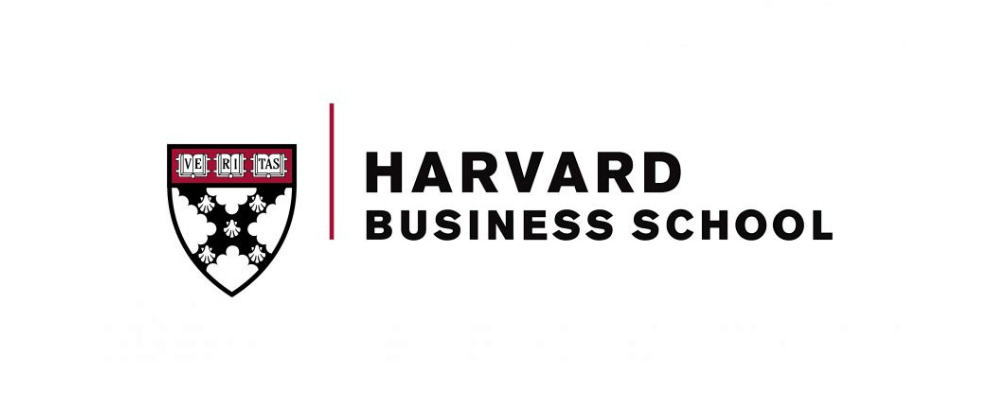
So much has changed since a groundbreaking study found that daughters of working moms often perform better in their own careers than daughters of stay-at-home moms—and are just as happy, to boot.
Diversity, equity, and inclusion efforts across higher education and corporate America have continued to broaden opportunities for women in the workplace over the intervening five years, but the COVID-19 pandemic threw a wrench into many a working mom’s fragile work-life balance. Kathleen McGinn, the Harvard Business School scholar behind the original research, continues to study gender and employment, and points to some surprising new developments for working moms. Despite all the upheaval, the changes aren’t all bad.
“Children got to see how their moms and dads managed to be good parents and good employees at the same time.”
In April 2020, McGinn and HBS assistant professor Alexandra C. Feldberg embarked upon a new survey of parents in two-earner households with kids under 18 at home. Across several papers recently presented at the Academy of Management meetings in Boston, they sought to understand how parents allocated their time and how it affected their families.
“There’s good news and mixed news,” says McGinn, the Cahners-Rabb Professor of Business Administration at HBS. Women have seen employment gains, while some gender roles have remained firmly entrenched thanks to outdated household norms and workplace demands, she observes.
One silver lining of the pandemic for family dynamics, tying back to McGinn’s prior research: Homebound parents modeled less gendered approaches to multitasking for their kids during lockdown, which their kids will hopefully retain in their own working lives. “Children got to see how their moms and dads managed to be good parents and good employees at the same time,” McGinn says.
The kids are OK
McGinn and colleagues’ 2019 work put new context around the age-old career-versus-stay-at-home debate. Across two multinational datasets spanning 29 countries and two decades, they found that adult daughters of employed moms are more likely themselves to work, are more likely to be supervisors, and are more likely to earn higher wages than the daughters of mothers who stayed at home full time. The effects remained, even after controlling for parents’ education and type of employment.
Men raised by moms who were employed show no differences in employment relative to their peers raised by moms who stayed home, but they report spending more time with their own families. This is especially important as both men and women strive for greater involvement with loved ones while also pursuing their careers.
“Our finding that maternal employment doesn’t affect kids’ happiness in adulthood is really important.”
The results probed whether adult children of employed moms are as happy as those of stay-at-home moms, and found that daughters’ and sons’ own self-reports indicate no differences in happiness related to mothers’ employment status.
“People still have this belief that it’s detrimental to their children when moms are employed,” said McGinn at the time. “So our finding that maternal employment doesn’t affect kids’ happiness in adulthood is really important.”
In analyses exploring the mechanisms underlying these differences, the authors found that the effects were strongest for women and men who were parents themselves, suggesting that working mothers modelled the work-home juggle successfully, showing their sons and daughters that it could be done and how.
Not stay-at-home—but work-from-home
Since then, COVID-19 upended life at work and at home: For a while, many mothers and fathers brought their jobs home because they had no choice.
First, the good news: While much has been written about how the pandemic was enormously taxing on moms—and how they fled the workforce at a much higher rate than fathers—this didn’t have lasting career ramifications. By May 2023, the number of employed moms was at its historic peak.
“COVID-19 did not destroy all the gains moms have made, and that’s good news.”
“Now, 77.5 percent of women in the US are employed, which is a higher proportion of working mothers than we’ve seen since data were first collected in 1948. COVID-19 did not destroy all the gains moms have made, and that’s good news,” McGinn says. Similarly, some of the changes to work instituted in response to COVID-19—such as remote or hybrid work—have the potential to enhance parents’ ability to balance family time with employment.
There are also caveats: Economists are weighing in on the exact nature of women’s new jobs—whether they’re lower-paying or fall outside of a woman’s chosen field. In addition, other employment changes either instituted or reinforced during the pandemic—such as frequent team meetings and expectations of instant responses to all requests—undermine both women’s and men’s ability to balance their personal and professional lives. “Because everything’s online, you’re on 24/7. That’s unsustainable,” McGinn says.
But McGinn is optimistic, noting that many of the women she and her coauthors surveyed are leaving traditionally gendered jobs such as teaching and nursing for higher-paying fields with better hours. “In our data, we are not seeing women take on lower-paying jobs. But we are seeing women take different kinds of jobs,” she says.
Dads’ work-life balance is altered, as well
McGinn also found that fathers are beginning to recognize the toll of parenting on work and the need for more flexible work-life balance. But there’s a catch.
“From our data—and it looks like other scholars are seeing the same thing—dads are still not as willing to make these demands on their employers.”
“The bad news is that dads still are not taking full advantage of flexibility employers are willing to offer. From our data—and it looks like other scholars are seeing the same thing—dads are still not as willing to make these demands on their employers. And when men do request flexibility, they are less likely than women to say they’re doing so to accommodate their family’s needs.” McGinn says. This is especially true of high-wage-earning fathers who might feel hamstrung by the always-on workplace culture.
“Dads were exposed [to family demands]. The shock was real. They did see it, they acknowledge it, they sort of understand it. And yet they feel they don’t have a lot of opportunity to create big changes in the household because of the perceived demands of their employers,” she says.
The way the office changed (or needs to)
As for the future: The onus is on companies to promote a more egalitarian workplace that reflects modern demands, such as flexibility and less face time. The stereotype of a devoted worker willing to put in limitless hours is becoming obsolete, McGinn finds.
“Organizations are going to have to deal with the fact that the ‘ideal worker’ is gone,” she says. “Increasingly, neither men nor women want their lives to revolve entirely around work. Organizations can’t just keep expecting their employees to sacrifice everything for their jobs; they’re going to have to figure that out.”
Two simple ways that companies can help balance the scales for caregivers:
Reduce commuting. Workplaces should consider when employees truly need to be in the office.
“Hybrid work, where you’re in the office when you’re needed but don’t have that extra hour- or two-hour commute when you don’t have to be at the office is critical for families. It means an hour or more in every one of your employees’ lives, which is better for parents and better for the environment. That’s a big pandemic takeaway, and both moms and dads are really valuing it,” McGinn says.
Reduce make-work meetings. She urges employers to examine what she calls “extraneous work” and “collaboration overload.”
“When you’re in meetings all of the time, that’s a reduction in productivity, not an increase in productivity,” says McGinn. “Organizations need to start looking at expectations that everybody’s going to be working with everybody all of time and start saying: ‘How can we change this?’”
“Harvard Business School is the graduate business school of Harvard University, a private research university in Boston, Massachusetts. It is consistently ranked among the top business schools in the world and offers a large full-time MBA program, management-related doctoral programs, and executive education programs.”
Please visit the firm link to site





